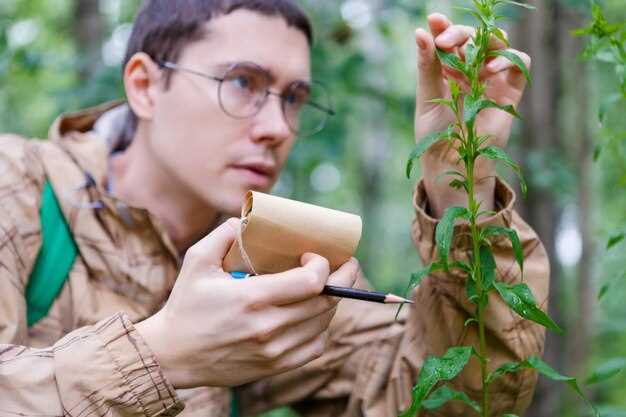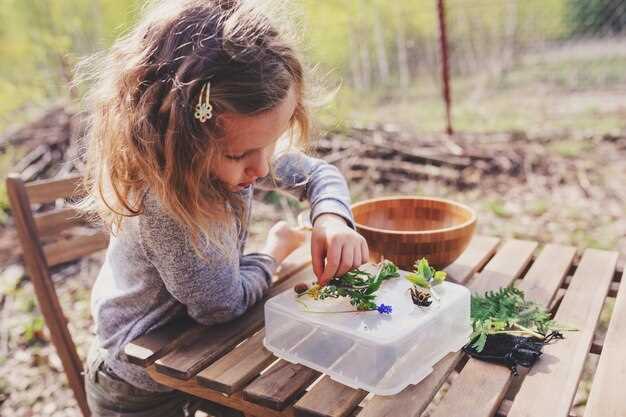How to Identify Edible Plants in the Wild

Foraging for edible wild plants can be an exciting and rewarding experience, allowing you to connect with nature while adding unique flavors to your meals. Understanding how to identify these plants accurately is crucial, as some wild plants can be toxic or inedible. This article will guide you through the fundamental steps to simplify the process of recognizing numerous edible species found in your local environment.
With a growing interest in sustainable living and natural food sources, many people are turning to wild foraging as a way to supplement their diets. Learning to spot various edible plants not only enhances your culinary options but also fosters a deeper appreciation for biodiversity. By honing your identification skills, you can confidently explore the wild and enjoy the rich, diverse flavors that nature has to offer.
This comprehensive guide will cover essential tips and tricks for identifying edible wild plants. From recognizing key characteristics to understanding their growth habitats, our aim is to demystify the process and empower you to forage safely and responsibly. Join us as we delve into the world of wild edibles and unlock the secrets that nature holds.
Key Steps for Safe Foraging in Your Local Area

Foraging for wild plants can be a rewarding experience, but safety should always be your top priority. To ensure a safe and successful foraging adventure, follow these key steps.
First, educate yourself about local edible plants. Invest time in books, online resources, or local workshops that focus specifically on the flora in your area. Understanding which plants are safe to eat and how to identify them is crucial for your foraging success.
Next, learn to distinguish between edible plants and their toxic look-alikes. Many poisonous plants closely resemble their edible counterparts. Familiarize yourself with these differences, so you can avoid accidental consumption of harmful species.
Avoid foraging in areas that may be contaminated. Stay away from locations near roadsides, industrial sites, or places that may have been sprayed with pesticides. Opt for clean, natural environments such as parks, nature reserves, or your own backyard.
Select plants that are in season to increase your chances of finding abundant and fresh specimens. Seasonal knowledge will help you understand when various plants are at their peak for foraging, making it easier to gather a variety.
Respect the environment while foraging. Follow ethical foraging guidelines, such as taking only what you need, leaving enough for wildlife and other foragers, and avoiding overharvesting rare species. This practice helps sustain plant populations for future generations.
Lastly, always test new edible plants in small amounts before consuming larger quantities. This precaution allows you to monitor for any allergic reactions or adverse effects, especially if you are trying a plant for the first time. Gradual introduction ensures a safer foraging experience.
Common Edible Plants You Can Find in Urban Environments
Foraging in urban settings can yield a surprising variety of edible plants. City parks, sidewalks, and gardens often host these nutritious species, making them accessible to those willing to explore. Here are some common edible plants that thrive in urban areas.
Dandelion (Taraxacum officinale) is one of the most recognizable wild plants, often seen in lawns and gardens. Its leaves can be harvested for salads or cooked like spinach, while the flowers can be used to make dandelion wine or added to herbal teas. The roots are also edible and can be roasted for a caffeine-free coffee substitute.
Chickweed (Stellaria media) is a succulent, tender plant that grows abundantly in disturbed soil, gardens, and along pathways. Its mild, slightly sweet flavor makes it an excellent addition to salads, sandwiches, or smoothies. The entire plant, including the flowers, is edible and packed with nutrients.
Plantain (Plantago major) is often overlooked, yet it’s a highly nutritious plant found in urban landscapes. Its broad leaves can be eaten raw in salads or cooked, and the young leaves are more tender and flavorful. The seeds can also be harvested for their nutritional benefits.
Nettle (Urtica dioica), while known for its sting, is a highly nutritious plant found in many urban settings. Cooking or drying the leaves eliminates the sting, allowing for its use in soups, teas, or pestos. Nettles are rich in vitamins A and C, iron, and calcium.
Purslane (Portulaca oleracea) is a succulent plant recognized for its fleshy leaves and stems. It thrives in sunny areas and is often found among cracks in pavement or in gardens. With a slightly lemony flavor, purslane is delicious raw in salads or cooked as a side dish.
Wild garlic (Allium vineale) is commonly found in grassy areas and forests but can also grow in urban gardens. Its distinctive aroma and flavor make it a great addition to various dishes. Both the leaves and bulbs are edible; the leaves can be used raw or cooked, while the bulbs can be roasted or added to meals for an extra burst of flavor.
Foraging for these plants not only promotes a sustainable lifestyle but also allows individuals to connect with their urban environment. Always ensure proper identification before consuming any wild plant and be mindful of potential pollutants in urban areas.
Tips for Properly Preparing and Cooking Wild Edibles

When harvesting wild edible plants, it’s essential to properly prepare and cook them to enhance their flavors and ensure safety. Start by thoroughly washing all harvested plants to remove dirt, insects, and potential contaminants. Use cold water, and consider soaking tougher leaves to help dislodge any debris.
Next, identify any inedible parts of the plant and remove them. For example, young leaves or flowers are often more palatable than older, fibrous stems. Additionally, some plants may have toxic components that require specific preparation methods, such as boiling or discarding certain parts before consumption.
Cooking can significantly alter the taste and digestibility of wild edibles. Steaming or sautéing not only brings out their natural flavors but also helps to neutralize any bitterness. For leafy greens, blanching in boiling water for a few minutes can make them tender and palatable while preserving nutrients.
Experiment with various cooking techniques, such as roasting, grilling, or incorporating wild plants into soups and stews. This allows you to combine flavors and create delicious dishes that highlight the unique tastes of edible plants.
Lastly, always start with small quantities when trying new wild edibles in meals. Some individuals may have sensitivities or allergies to certain plants. By gradually introducing these ingredients into your cooking, you can monitor your body’s response and enjoy the diverse world of wild foods safely.
